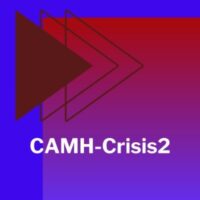Reaven, J., Blakeley-Smith, A., Culhane-Shelburne, K. and Hepburn, S. (2012) Group cognitive behavior therapy for children with high-functioning autism spectrum disorders and anxiety: a randomized trial. Journal of Child Psychology and Psychiatry, 53: 410–419. doi:10.1111/j.1469-7610.2011.02486. Available at: http://onlinelibrary.wiley.com/doi/10.1111/j.1469-7610.2011.02486.x/full [accessed 1 June 2017]
James AC, James G, Cowdrey FA, et al. (2015) Cognitive behavioural therapy for anxiety disorders in children and adolescents. Cochrane Database of Systematic Reviews, Issue 2. Art. No.: CD004690. DOI: 10.1002/14651858.CD004690.pub4. Available at: http://onlinelibrary.wiley.com/doi/10.1002/14651858.CD004690.pub4/full [accessed 1 June 2017]
Özabacı N. (2011) Cognitive behavioural therapy for violent behaviour in children and adolescents: A meta-analysis. Children and Youth Services Review. 33 (10): 1989–1993 Available at: https://doi.org/10.1016/j.childyouth.2011.05.027 [accessed 1 June 2017]
Richardson T, Stallard P, Velleman S. (2010) Computerised cognitive behavioural therapy for the prevention and treatment of depression and anxiety in children and adolescents: a systematic review. Clinical Child and Family Psychology Review. 13(3): 275-290 Available at: https://link.springer.com/article/10.1007%2Fs10567-010-0069-9 [accessed 1 June 2017]
Stallard P, Sayal K, Phillips R, et al. (2012) Classroom based cognitive behavioural therapy in reducing symptoms of depression in high risk adolescents: pragmatic cluster randomised controlled trial BMJ; 345:e6058 Available at: http://www.bmj.com/content/345/bmj.e6058 [accessed 1 June 2017]
Bolton, D., Williams, T., Perrin, S. et al. (2011), Randomized controlled trial of full and brief cognitive-behaviour therapy and wait-list for paediatric obsessive-compulsive disorder. Journal of Child Psychology and Psychiatry, 52: 1269–1278. doi:10.1111/j.1469-7610.2011.02419.x Available at: http://onlinelibrary.wiley.com/doi/10.1111/j.1469-7610.2011.02419.x/full [accessed 1 June 2017]
Hetrick SE, Cox GR, Witt KG et al. (2016) Cognitive behavioural therapy (CBT), third-wave CBT and interpersonal therapy (IPT) based interventions for preventing depression in children and adolescents. Cochrane Database of Systematic Reviews Issue 8. Art. No.: CD003380. DOI: 10.1002/14651858.CD003380.pub4. Available at: http://onlinelibrary.wiley.com/doi/10.1002/14651858.CD003380.pub4/full [accessed 1 June 2017]
Mindfulness. (2010) Mental Health Foundation Available at: https://www.mentalhealth.org.uk/sites/default/files/Mindfulness_report_2010.pdf [accessed 1 June 2017]
Crowley, M. J., Nicholls, S. S., McCarthy, D et al. (2017), Innovations in practice: group mindfulness for adolescent anxiety – results of an open trial. Child Adolesc Ment Health. doi:10.1111/camh.12214 Available at: http://onlinelibrary.wiley.com/doi/10.1111/camh.12214/full [accessed 1 June 2017]
Van Vliet, K. J., Foskett, A. J et al. (2017), Impact of a mindfulness-based stress reduction program from the perspective of adolescents with serious mental health concerns. Child Adolesc Ment Health, 22: 16–22. doi:10.1111/camh.12170 Available at: http://onlinelibrary.wiley.com/doi/10.1111/camh.12170/full [accessed 1 June 2017]
Tan, L, Martin, G. (2015), Taming the adolescent mind: a randomised controlled trial examining clinical efficacy of an adolescent mindfulness-based group programme. Child Adolesc Ment Health, 20: 49–55. doi:10.1111/camh.12057 Available at: http://onlinelibrary.wiley.com/doi/10.1111/camh.12057/full [accessed 1 June 2017]
Kallapiran, K., Koo, S., Kirubakaran, R. and Hancock, K. (2015), Review: Effectiveness of mindfulness in improving mental health symptoms of children and adolescents: a meta-analysis. Child Adolesc Ment Health, 20: 182–194. doi:10.1111/camh.12113 Available at: http://onlinelibrary.wiley.com/doi/10.1111/camh.12113/full [accessed 1 June 2017]
O’Toole C, Furlong M, McGilloway et al. (2017) Preschool and school-based mindfulness programmes for improving mental health and cognitive functioning in young people aged 3 to 18 years (Protocol). Cochrane Database of Systematic Reviews, Issue 1. Art. No.: CD012518. DOI: 10.1002/14651858.CD012518. Available at: http://onlinelibrary.wiley.com/doi/10.1002/14651858.CD012518/full [accessed 1 June 2017]
Zenner C, Herrnleben-Kurz S, Walach H, (2014) Mindfulness-based interventions in schools—a systematic review and meta-analysis Front. Psychol. https://doi.org/10.3389/fpsyg.2014.00603 Available at: http://journal.frontiersin.org/article/10.3389/fpsyg.2014.00603/full [accessed 1 June 2017]
Fisher CA, Hetrick SE, Rushford N. (2010) Family therapy for anorexia nervosa. Cochrane Database of Systematic Reviews, Issue 4. Art. No.: CD004780. DOI: 10.1002/14651858.CD004780.pub2. Available at: http://onlinelibrary.wiley.com/doi/10.1002/14651858.CD004780.pub2/abstract [accessed 2 June 2017]
Bjornstad GJ, Montgomery P. (2005) Family therapy for attention-deficit disorder or attention-deficit/hyperactivity disorder in children and adolescents. Cochrane Database of Systematic Reviews, Issue 2. Art. No.: CD005042. DOI: 10.1002/14651858.CD005042.pub2. Available at: http://onlinelibrary.wiley.com/doi/10.1002/14651858.CD005042.pub2/abstract [accessed 2 June 2017]
Lindstrøm M, Filges T, Klint Jørgensen A. (2014) Brief Strategic Family Therapy for Young People in Treatment for Drug Use. Research on Social Work Practice. Volume: 25 issue: 1, page(s): 61-80 Available at: http://journals.sagepub.com/doi/abs/10.1177/1049731514530003 [accessed 2 June 2017]
Spain D, Sin J, Paliokosta E et al. (2017) Family therapy for autism spectrum disorders. Cochrane Database of Systematic Reviews, Issue 5. Art. No.: CD011894. DOI: 10.1002/14651858.CD011894.pub2. Available at: http://onlinelibrary.wiley.com/doi/10.1002/14651858.CD011894.pub2/abstract [accessed 2 June 2017]
Tanner-Smith E, Wilson SJ, Lipsey M. (2013) The Comparative Effectiveness of Outpatient Treatment for Adolescent Substance Abuse: A Meta-Analysis. J Subst Abuse Treat. Feb; 44(2): 145–158.doi: 10.1016/j.jsat.2012.05.006 Available at: https://www.ncbi.nlm.nih.gov/pmc/articles/PMC3477300/ [accessed 2 June 2017]
Maynard B, Solis M, Miller V et al. (2017) Mindfulness-based interventions for improving cognition, academic achievement, behavior, and socioemotional functioning of primary and secondary school students A Campbell Systematic Review 5 Available at: https://www.campbellcollaboration.org/media/k2/attachments/Campbell_systematic_review_-_Mindfulness_and_school_students.pdf [accessed 1 June 2017]
Stewart-Brown S. (2006) What is the evidence on school health promotion in improving health or preventing disease and, specifically what is the effectiveness of the health promoting schools approach. Editors: WHO Regional Office for Europe, Health Evidence Network, Health Evidence Network report. Copenhagen. Available at: http://www.euro.who.int/__data/assets/pdf_file/0007/74653/E88185.pdf [accessed 1 June 2017]
McMain S, Newman M, Segal Z (2015) Cognitive behavioural therapy: Current status and future research directions, Psychotherapy Research, DOI: 10.1080/10503307.2014.1002440. Available at: https://www.researchgate.net/publication/269995350_Cognitive_behavioral_therapy_Current_status_and_future_research_directions [accessed Jun 4, 2017].
Green, J. (2015) Relationship-based treatments. In: A Thapar & D.S. Pine et al, ed., Rutter’s Child and Adolescent Psychiatry, Sixth Edition. JohnWiley & Sons, Ltd. 521-532
Muller, N., & Midgley, N. (2015). Approaches to assessment in time-limited Mentalization-Based Therapy for Children (MBT-C). Frontiers in Psychology, 6, 1063. http://doi.org/10.3389/fpsyg.2015.01063. Available at: https://www.ncbi.nlm.nih.gov/pmc/articles/PMC4515539/ [accessed 8 September 2017].
Rossouw T, Fonagy P. (2012) Mentalization-based treatment for self-harm in adolescents: a randomized controlled trial. J Am Acad Child Adolesc Psychiatry. 2012 Dec;51(12):1304-1313.e3. doi: 10.1016/j.jaac.2012.09.018. Abstract available at: https://www.ncbi.nlm.nih.gov/pubmed/23200287 [accessed 8 September 2017].
Mental elf link: https://www.nationalelfservice.net/publication-types/randomised-controlled-trial/talking-therapy-for-teenagers-mbt-a-reduces-self-harm-and-depression-in-self-harming-teens-over-a-12-month-period/
Ougrin, D, Tranah, T, Stahl, D et al. (2015) Therapeutic Interventions for Suicide Attempts and Self-Harm in Adolescents: Systematic Review and Meta-Analysis. J Am Acad Child Adolesc Psychiatry. 54(2):97–107. Abstract available at: https://www.ncbi.nlm.nih.gov/pubmed/25617250 [accessed 8 September 2017].
Bak, P. L., Midgley, N., Zhu, J. L., Wistoft, K., & Obel, C. (2015). The Resilience Program: preliminary evaluation of a mentalization-based education program. Frontiers in Psychology, 6, 753. http://doi.org/10.3389/fpsyg.2015.00753. Available at: https://www.ncbi.nlm.nih.gov/pmc/articles/PMC4468359/ [accessed 8 September 2017].
Midgley, N, Kennedy, E. (2011) Psychodynamic psychotherapy for children and adolescents: a critical review of the evidence base. Journal of Child Psychotherapy. Vol. 37, No. 3, 232–260 Available at: http://hewittlab.sites.olt.ubc.ca/files/2015/08/Midgley2011.pdf [accessed 8 September 2017].
Abbass, A, Rabung, S, Leichsenring, F et al. (2013) Psychodynamic Psychotherapy for Children and Adolescents: A Meta-Analysis of Short-Term Psychodynamic Models. Journal of the American Academy of Child & Adolescent Psychiatry. 52; 8 Available at: https://www.ncbi.nlm.nih.gov/pubmed/23880496 [accessed 8 September 2017].
NICE. (2015) Depression in children and young people. Clinical guideline [CG28] Available at: https://www.nice.org.uk/guidance/cg28 [accessed 10 September 2017]
Mufson, L. (2010), Interpersonal Psychotherapy for Depressed Adolescents (IPT- A): Extending the Reach from Academic to Community Settings1. Child and Adolescent Mental Health, 15: 66–72. doi:10.1111/j.1475-3588.2009.00556.x Available at: http://onlinelibrary.wiley.com/doi/10.1111/j.1475-3588.2009.00556.x/full [accessed 10 September 2017]
Pu, J, Zhoua, X, Liu, L, et al. (2017) Efficacy and acceptability of interpersonal psychotherapy for depression in adolescents: A meta-analysis of randomized controlled trials. Psychiatry Research 253 (2017) 226–232 http://dx.doi.org/10.1016/j.psychres.2017.03.023 Abstract available at: https://www.ncbi.nlm.nih.gov/pubmed/28391140 [accessed 13 September 2017]
Crowe, K, McKay, D. (2017) Review: Efficacy of cognitive-behavioral therapy for childhood anxiety and depression. Journal of Anxiety Disorders.49. 76-87 http://dx.doi.org/10.1016/j.janxdis.2017.04.001 Abstract available at: http://www.sciencedirect.com/science/article/pii/S0887618516300986 [accessed 13 October 2017]
Wang, Z, Whiteside, S, Sim, L. et al. (2017) Comparative Effectiveness and Safety of Cognitive Behavioral Therapy and Pharmacotherapy for Childhood Anxiety Disorders. A Systematic Review and Meta-analysis. JAMA Pediatr. Published online August 31, 2017. doi:10.1001/jamapediatrics.2017.303. Abstract available at: https://jamanetwork.com/journals/jamapediatrics/article-abstract/2650801 [accessed 13 October 2017]Cox GR, Callahan P, Churchill R, et al. (2014) Psychological therapies versus antidepressant medication, alone and in combination for depression in children and adolescents. Cochrane Database of Systematic Reviews, Issue 11. Art. No.: CD008324. DOI: 10.1002/14651858.CD008324.pub3. Available at: http://onlinelibrary.wiley.com/doi/10.1002/14651858.CD008324.pub3/full [accessed 17 October 2017]
Van der Oord, S., Bögels, S. M., & Peijnenburg, D. (2012). The Effectiveness of Mindfulness Training for Children with ADHD and Mindful Parenting for their Parents. Journal of Child and Family Studies, 21(1), 139–147. http://doi.org/10.1007/s10826-011-9457-0 Available at: https://www.ncbi.nlm.nih.gov/pmc/articles/PMC3267931/ [accessed 17 October 2017]
Van de Weijer-Bergsma, E., Formsma, A. R., de Bruin, E. I. et al. (2012). The Effectiveness of Mindfulness Training on Behavioral Problems and Attentional Functioning in Adolescents with ADHD. Journal of Child and Family Studies, 21(5), 775–787. http://doi.org/10.1007/s10826-011-9531-7 Available at: https://www.ncbi.nlm.nih.gov/pmc/articles/PMC3438398/ [accessed 17 October 2017]
Hay PPJ, Bacaltchuk J, Stefano S, et al. (2009) Psychological treatments for bulimia nervosa and binging. Cochrane Database of Systematic Reviews, Issue 4. Art. No.: CD000562. DOI: 10.1002/14651858.CD000562.pub3. Available at: http://onlinelibrary.wiley.com/doi/10.1002/14651858.CD000562.pub3/abstract [accessed 17 October 2017]
Le Grange D, et al. (2016) Randomized Clinical Trial of Parent-Focused Treatment and Family-Based Treatment for Adolescent Anorexia Nervosa. J Am Acad Child Adolesc Psychiatry 2016; doi: http://dx.doi.org/10.1016/j.jaac.2016.05.007. Abstract available at: http://www.jaacap.com/article/S0890-8567(16)30181-2/abstract [accessed 17 October 2017]
Mental elf link: https://www.nationalelfservice.net/mental-health/eating-disorders/parent-focused-treatment-for-adolescents-with-anorexia-nervosa-more-efficient-than-family-based-treatment





